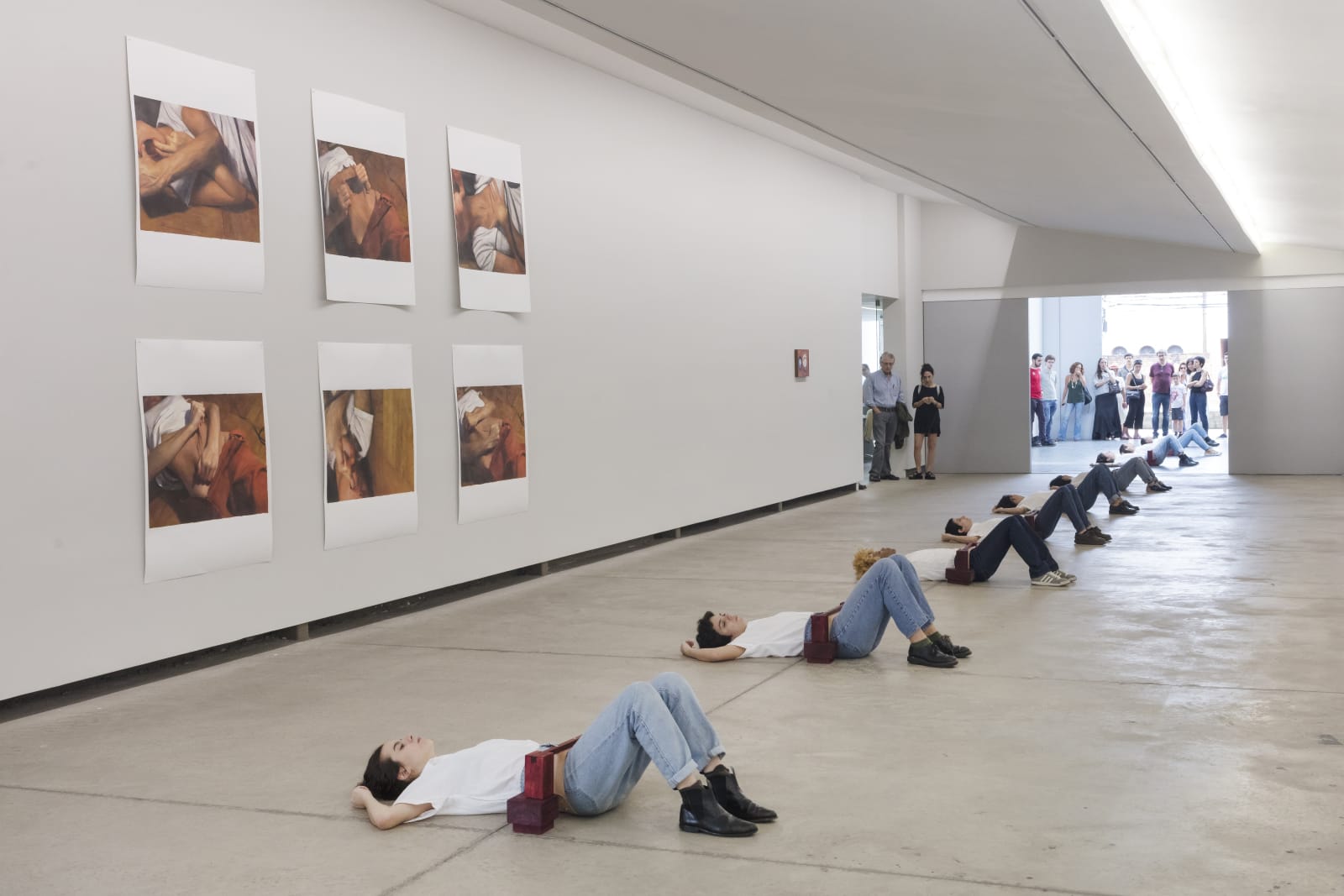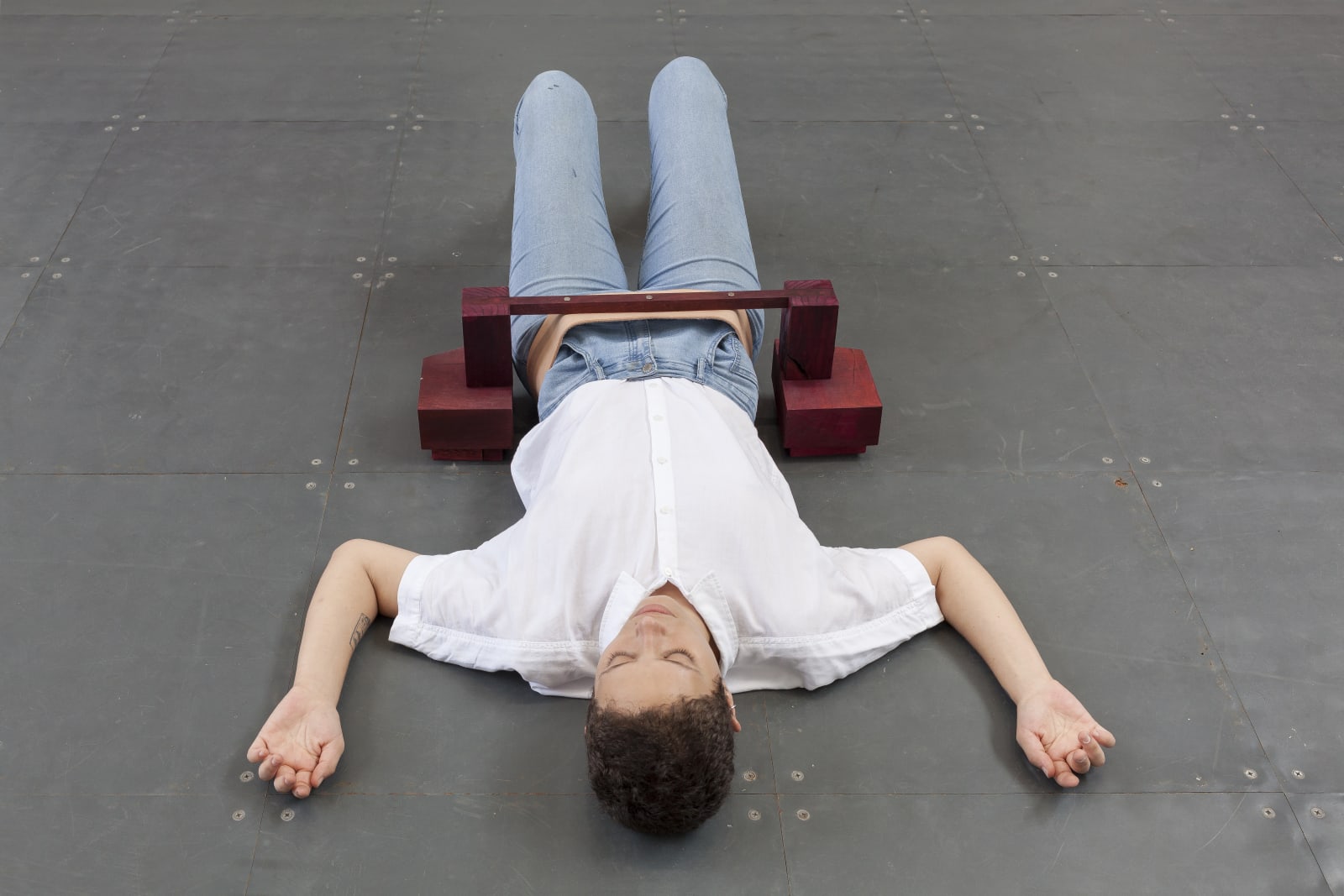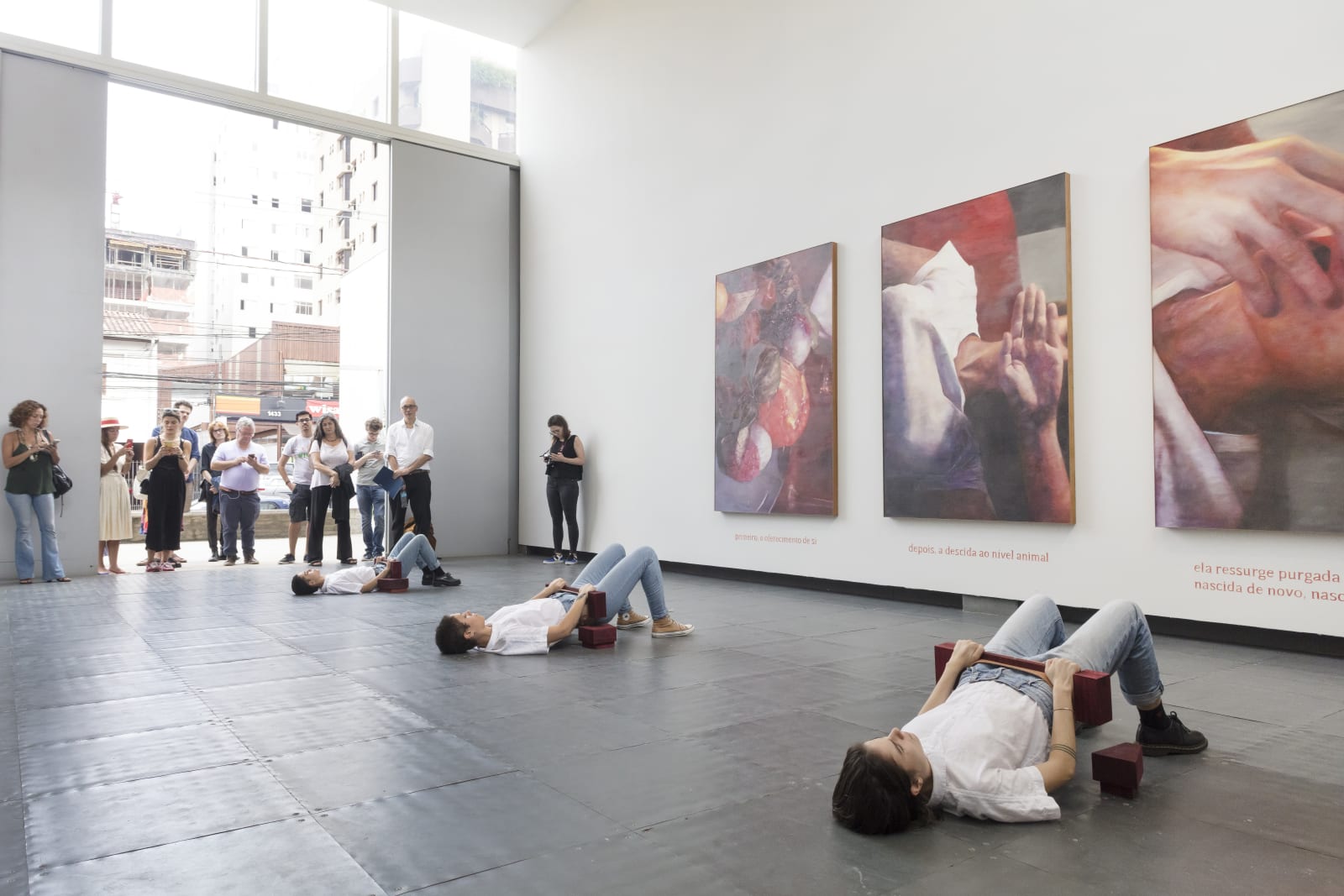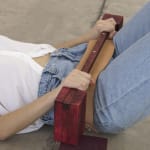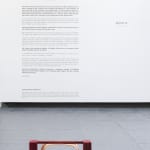Regina Parra & Ana Mazzei
Further images
Bacchae
Review by Camila Belchior for ArtForum, Summer, 2019.
As a wave of conservatism sweeps the globe, among the welcome signs of resistance is the continuing spread of feminist discourses. Regina Parra’s solo show “Bacante” (Bacchante) took inspiration from Euripides’s tragedy The Bacchae to offer a perspective on feminism and the female self that is rooted in antiquity. While the play was the artist’s point of departure, her research was informed by wider studies in Greek mythology and poetry as well as nineteenth-century photographic investigations of hysteria.
A series of six oil paintings on paper, “A Perigosa” (The Dangerous One) (all works 2019), depicted close-ups of a female body (that of the artist) dressed in a white T-shirt and orange trousers, lying on a parquet floor. In some she thrusts her fingers into her mouth or into the flesh around her jaw; in others she tugs at her midriff. Her gestures oscillate between sensuality and violence, exploring the boundaries of the body in an effort to liberate the self from its physical form. The canvases were here displayed side by side, in two sets of three, and a black cable trailing in and out of each image reinforced the sense of continuity between them. Facing these works was a neon wall piece, febril (Feverish), bearing a text in Portuguese, from the Greek poet Sappho, that beautifully conveys a wavering between ecstasy and death: febril e sem ar / quase morro (Feverish and breathless / I almost die).
Lined up on the floor in a row that ran through two rooms were nine leather-and-wood, belt- like objects made by the Brazilian artist Ana Mazzei, creating a gravitational pull through the galleries and strengthening the bond between all the works. These objects were worn during a performance cocreated by Parra and Mazzei, which took place on two occasions during the show. In these performances, nine women wearing white shirts and jeans, with Mazzei’s objects strapped round their waists, lay on their backs on the floor and repeatedly thrust their hips in the air. As their hips fell back onto the floor, the wood appendages attached to the sides of the belts hit wood blocks laid beside the bodies, making loud discordant sounds that evoked a sense of independent cadence yet united strength.
Parra’s interest in gesture was also central to the video Lasciva (Lascivious), co-choreographed by Bruno Levorin, which shows two female dancers interpreting a composition inspired by the poses in the historical photographs that illustrated Jean-Martin Charcot’s studies of hysteria. Performed to the sound of a distorted guitar, with slow, graceful movements that seem to reclaim ownership of the gestures catalogued by the French neurologist, the piece has an ominous gravitas.
A still life with fruits and two images of the artist, again in a white T-shirt, hand held over her mouth, formed the triptych Bacante, 2019. Inscribed on the wall underneath the paintings were phrases about the offering of the self, the descent into the animal realm (the underworld), and being reborn, purged. Ela se entrega ao leite (She Falls into the Milk), 2019, a small aerial-view painting of two mundane bowls of milk, hung close by as a reminder of the ordinary small deaths and resurrections of the self to which women are routinely subject in patriarchal societies. The references in Parra’s works are multilayered but always point to the desire to break free from socially imposed limits on the body and the repressive trappings that encumber us.
Exhibitions
Bacchae (2019) at Galeria Millan, Sao Paulo, Brazil
